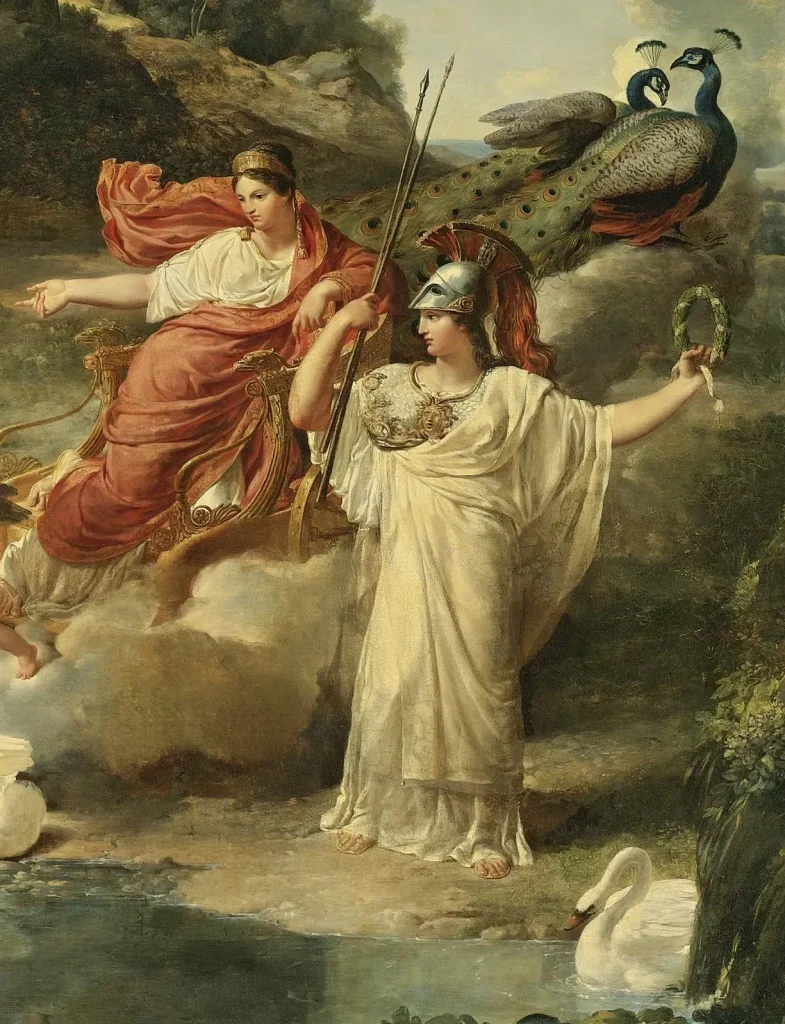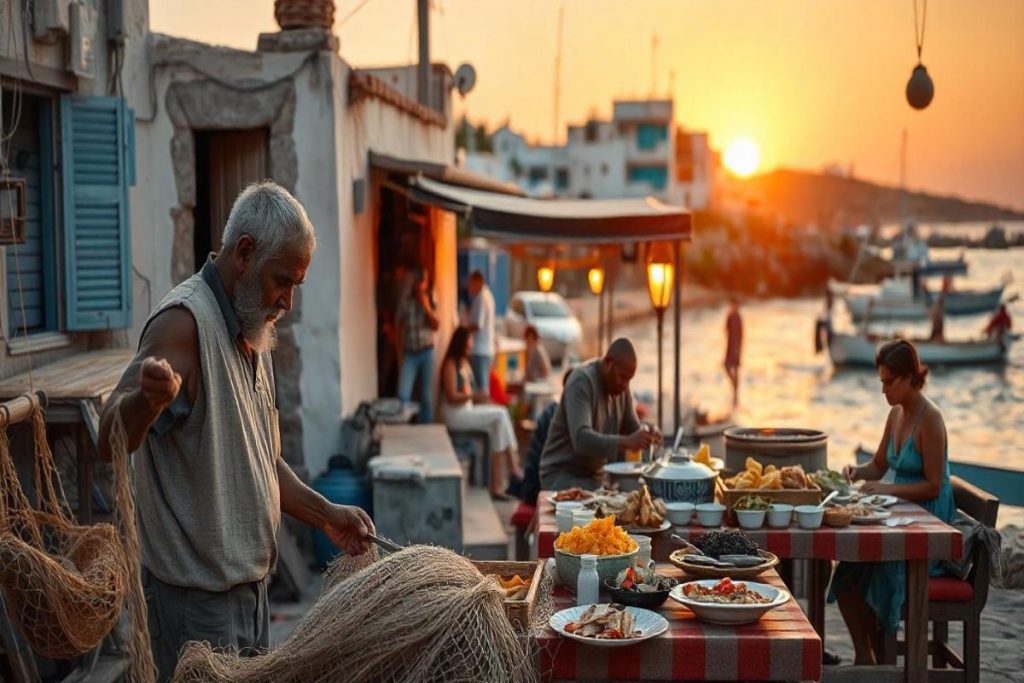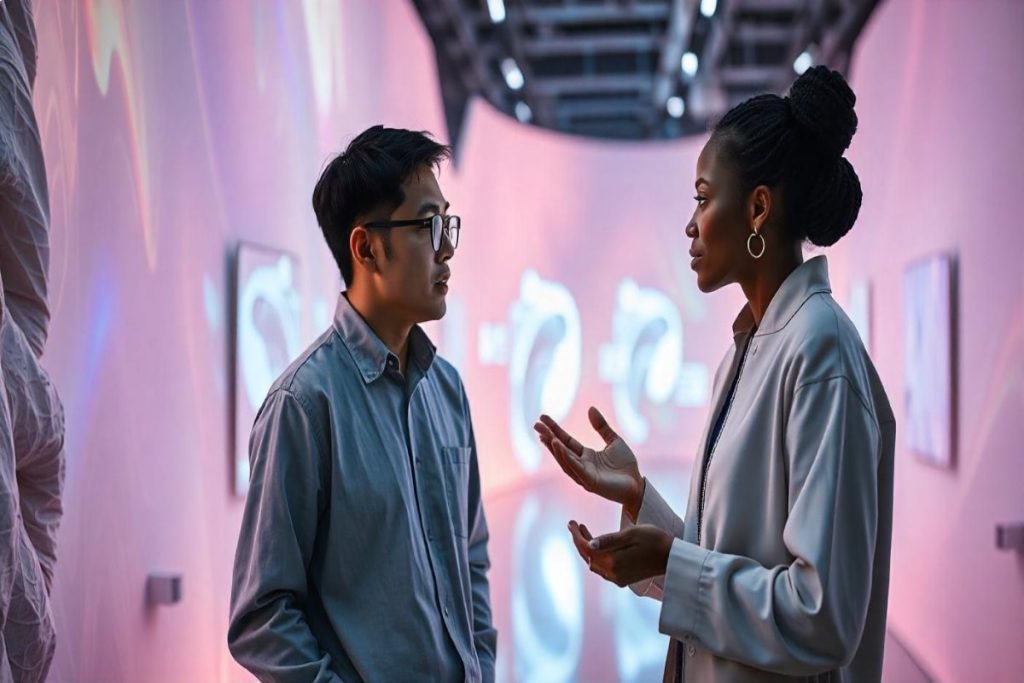The Renaissance Myth is a captivating narrative that celebrates a period recognized as a golden age of cultural rebirth, profoundly influencing our understanding of history. Emerging from the depths of Renaissance history, this myth suggests that advancements in art, architecture, and philosophy marked a definitive break from the medieval past. However, recent historical criticism challenges this notion, prompting us to question the authenticity of what we consider this flourishing era. The intertwining of 19th-century aesthetics with Renaissance achievements reveals that our admiration for figures like Leonardo da Vinci and Michelangelo may be less about their actual contributions and more about the romanticized ideals we impose on them. As we navigate through the history of art, the Renaissance Myth serves both as an inspiration and a cautionary tale about the narratives we construct around our cultural heritage.
The term often referred to as the Renaissance Myth encapsulates the broader concept of a so-called cultural rebirth that spanned a transformative era in Western civilization. This narrative, situated within the context of emerging European modernity, defines itself through a lens shaped by artistic innovation and intellectual resurgence. Throughout this phase, the ideals of humanism, along with a robust exploration of classical antiquity, intertwined to redefine cultural perception and philosophy. However, as recent scholarly discourse illustrates, these ideas may be less linear than traditionally portrayed, often reflecting the complexities of a pluralistic society rather than a cohesive movement. In exploring this pluralism, we uncover how the stories we tell about the Renaissance can illuminate or obscure our understanding of its true historical significance.
The Renaissance: A Golden Age or a Constructed Myth?
The Renaissance is often celebrated as a transformative period that heralded a rebirth of cultural and intellectual pursuits following the Middle Ages. Yet, recent scholarly perspectives question whether this era was indeed a golden age or rather a myth constructed by hindsight. In contrasting historical views, critics argue that the ideals associated with Renaissance Italy evoke a narrative that caters more to modern aspirations than to historical realities. This leads to a critical examination of the values we attribute to the Renaissance, suggesting that our admiration for figures like Leonardo da Vinci and Michelangelo may reflect our contemporary desires rather than the complexities of their lives.
Prominent critiques articulate that the Renaissance, rebranded in the mid-19th century as an age of beauty and progress, often overlooks the chaotic social and political dynamics of the time. Ada Palmer, one of the authors challenging the conventional narrative, focuses on the disillusionment within Renaissance society, arguing that many celebrated figures were not the idealists we envision today. This perspective invites readers to reconsider not only the historical context but also the cultural rebirth that supposedly defined the Renaissance, as it reveals a more nuanced understanding of how history is remembered and interpreted.
Renaissance Myth: The Influence of 19th Century Aesthetics
The idea of the Renaissance as a profound cultural rebirth gained momentum in the 19th century, a period marked by aesthetic movements that prioritized art as a vital aspect of life. Writers and artists like Walter Pater romanticized the Renaissance, framing it as an idyllic revival of classical antiquity. This reconstruction aligns closely with the emergence of 19th-century aesthetics, which positioned art as an essential counterpart to faith and morality. Consequently, this skewed portrayal shaped modern perceptions of the Renaissance as a unique historical anomaly, arguably elevating it above other periods of European history.
However, reading the Renaissance through the lens of 19th-century aesthetics risks oversimplifying its complexities. While the aesthetic values of the time may appeal to contemporary sensibilities, they fail to account for the gritty realities of Renaissance life, including poverty and political turbulence. The same critics who challenge the renaissance myth claim that this period’s portrayal often overlooks the dynamic interplay of cultural influences and local traditions, ultimately reducing a rich history to a narrative that serves modern expectations rather than historical truth.
The Historical Criticism of the Renaissance
Historical criticism serves as a vital tool in dissecting the narrative of the Renaissance, allowing scholars to unravel the mythos surrounding this period. Critics emphasize that many of the artistic and intellectual achievements attributed to the Renaissance were part of a continuum rather than abrupt milestones. Through the lens of historical criticism, art movements such as the Gothic and the influences of earlier thinkers emerge as pivotal elements that contributed to the so-called rebirth. By redirecting attention to these earlier influences, the Renaissance appears less like a solitary phenomenon and more like a complex tapestry of cultural development.
Furthermore, historical criticism raises essential questions about what constitutes a ‘Renaissance.’ If we consider earlier movements like the Carolingian Renaissance or the 12th-century Renaissance, it becomes apparent that the cultural and intellectual revival in 15th-century Florence was part of a broader historical narrative of continuous evolution and change. Such a view challenges the notion of a single, defining moment in history, advocating instead for an appreciation of the multilayered history that informs our understanding of cultural rebirth and progress.
Cultural Rebirth or Cultural Continuity?
The debate surrounding whether the Renaissance represents a true cultural rebirth or merely a continuation of previous traditions reflects deeper inquiries into the nature of historical change. By examining the Renaissance’s artistic outputs, we can see that many works maintained connections to medieval art forms and philosophies rather than representing a complete break from the past. This realization complicates the grand narrative of rebirth, suggesting that rather than being an isolated epoch, the Renaissance was a period characterized by the evolution and adaptation of existing ideas and styles.
Moreover, the recognition of cultural continuity prompts a reevaluation of innovation during the Renaissance, hinting that progress often arises from the synthesis of diverse influences rather than radical transformations. Far from being a clean slate, Renaissance art and thought can be understood as a dialogue between past and present. This perspective urges us to find a balance between celebrating the era’s advancements while acknowledging the foundational legacies that shaped it.
The Role of Art in Renaissance Society
Art during the Renaissance was not merely an aesthetic endeavor; it served as a dynamic reflection of society’s broader cultural currents. Artists often found themselves not only as creators but also as commentators on the political and social realities of their time. Understanding this dual role allows us to grasp the significance of the visual arts beyond their beauty, seeing them as instruments through which human experience and emotion are conveyed. This intrinsic connection between art and society underscores the complexity of Renaissance culture, challenging simplistic interpretations of its legacy.
Moreover, assessing the role of art in shaping Renaissance society reveals the interplay between economic conditions and artistic output. As cities flourished and economic opportunities expanded, so too did the patronage of the arts, leading to an explosion of creativity. However, this relationship was not without tensions; as artists navigated the demands of their patrons, they often grappled with their artistic integrity and the expectations imposed upon them. This multifaceted dynamic highlights how the Renaissance’s rich artistic legacy is deeply intertwined with its economic and social fabric.
Renaissance Cities: Prosperity or Anarchy?
The cities of Renaissance Italy are world-renowned for their art and culture; however, they were also sites of immense social and political strife. While historians have romanticized cities like Florence and Venice as centers of enlightenment, a more nuanced view reveals that these urban centers were also plagued by poverty, crime, and conflict among rival factions. This dichotomy forces us to reconsider the idealized vision of the Renaissance city as a bastion of cultural prosperity, instead recognizing the significant challenges that shaped everyday life during this tumultuous period.
Furthermore, the social dynamics within these cities often reveal a landscape of competition and power struggles. Figures such as the Medici family demonstrated how wealth could translate into cultural patronage but also sparked animosities leading to violence and instability. This narrative of conflict underscores that the celebrated achievements of the Renaissance cannot be detached from the realities of struggle and contention that defined the era. It invites a broader understanding of how art and thought emerged amid chaos, rather than solely from idyllic scenarios.
Re-evaluating Renaissance Figures
When we consider iconic Renaissance figures like Leonardo da Vinci and Michelangelo, it is essential to contextualize their contributions within the complexities of their time. Rather than viewing them as solitary geniuses operating in a vacuum, contemporary critiques encourage a deeper exploration of how their expertise was cultivated through collaborations and influence from their contemporaries. This understanding fosters a more balanced narrative that acknowledges the collective environment that nurtured exceptional talent, rather than attributing their accomplishments to individual brilliance alone.
Additionally, examining the personal flaws and contradictions of these famed individuals offers a candid perspective on their humanity. By peeling back the layers of myth, we reveal the self-doubt, ambition, and moral dilemmas that characterized their lives, making them relatable figures within the context of their achievements. This multifaceted portrayal not only enriches our understanding of Renaissance icons but also prompts reflections on how contemporary figures may similarly be idolized or mythologized in our cultural narratives.
Legacy of the Renaissance in Modern Culture
The legacy of the Renaissance continues to resonate within modern cultures, shaping artistic and intellectual sensibilities across centuries. The principles of individualism, humanism, and the celebration of art that emerged during this period have profoundly influenced contemporary thought and creative expressions. Recognizing the Renaissance’s legacy allows us to appreciate how its ideals inform our ongoing pursuits of beauty, knowledge, and education, ultimately framing the modern worldview in profound ways.
Moreover, the Renaissance’s emphasis on observation and inquiry laid the groundwork for modern scientific methodologies, ushering in an era where empirical knowledge is valued. This intersection of art and science is evident in today’s creative outputs, reminding us of the interconnectedness of different disciplines stemming from the Renaissance ethos. Understanding this continuity encourages contemporary society to embrace interdisciplinary approaches, celebrating the Renaissance as a pivotal chapter in the evolving narrative of human achievement.
Renaissance and the Evolution of Artistic Techniques
The Renaissance was a watershed moment for the evolution of artistic techniques, sparking innovations that would forever change the landscape of visual art. Techniques such as linear perspective, chiaroscuro, and anatomical precision revolutionized how artists depicted reality, marking a departure from the flat and symbolic styles of the medieval period. By mastering these techniques, artists not only improved technical representation but also brought a new sense of emotional depth and human experience to their work, making art a vessel for storytelling and reflection.
Furthermore, the gradual accumulation of these artistic advancements illustrates an ethos of experimentation that characterized the Renaissance period. Artists like Raphael and Titian pushed the boundaries of creative expression, blending influences from the past with contemporary insights. This spirit of innovation feeds into the broader narrative of progress during the Renaissance, underscoring how these developments laid the foundation for subsequent movements in art history. As we consider the rich tapestry of Renaissance art, we can appreciate it as a critical juncture that catalyzed both aesthetic pleasures and profound cultural shifts.
Frequently Asked Questions
What is the Renaissance Myth in the context of cultural rebirth?
The Renaissance Myth refers to the widely held belief that the Renaissance was a distinct and transformative cultural rebirth, characterized by a revival of classical learning and the emergence of modern thought. This myth suggests that the period marked a clear break from the Middle Ages, highlighting advancements in art, science, and philosophy. Recent critiques, however, argue that this notion is an oversimplification and that the Renaissance may be more accurately viewed as a complex interplay of continuity and change within European history.
How do recent historical criticisms challenge the traditional view of the Renaissance?
Recent historical criticisms challenge the traditional view of the Renaissance by suggesting that it may not have been as singular or groundbreaking as previously thought. Scholars like Bernd Roeck and Ada Palmer argue that the Renaissance is often romanticized and that many aspects attributed to the period, such as a significant departure from medievalism, may have deeper historical roots in earlier medieval cultural practices. They emphasize that the Renaissance could be seen as a way of reinterpreting the past rather than a true ‘rebirth’.
What influence did 19th-century aesthetics have on our understanding of Renaissance art?
19th-century aesthetics heavily influenced our understanding of Renaissance art by framing it as a high point of artistic achievement that celebrated beauty, harmony, and classical ideals. Authors like Walter Pater and William Morris defined the Renaissance as the pinnacle of cultural and artistic expression, which shaped modern perceptions. This romanticized perspective often overlooks the historical complexities and socio-political realities of the time, positioning the Renaissance more as an ideal than a factual reflection of its environment.
Can the achievements of the Renaissance be understood as a precursor to modernity?
Yes, many historians argue that the achievements of the Renaissance can be understood as a precursor to modernity, as the era fostered significant advancements in various fields including art, science, and humanism. The combination of artistic innovation and intellectual inquiry during this time laid the groundwork for developments that would lead to the Enlightenment and beyond. However, recent critiques suggest that viewing the Renaissance solely through this lens may oversimplify the complexity and continuity of historical progress.
What are some common misconceptions about the Renaissance as a historical period?
Common misconceptions about the Renaissance include the belief that it represented a sudden and linear progression from medieval stagnation to modern enlightenment. Many also incorrectly assume that it was a uniform cultural movement without acknowledging the regional differences and conflicts intrinsic to the era. Scholars now argue that the Renaissance should be seen as a multifaceted period, often marked by contradictions, local arrangements, and the ongoing relevance of medieval ideas and practices.
| Key Point | Description |
|---|---|
| Cultural Renaissance vs. Myth | The Renaissance is often celebrated as a cultural rebirth; however, two new books argue it might be a constructed myth rather than a concrete reality. |
| Nineteenth-Century Re-evaluation | The perception of the Renaissance shifted in the mid-nineteenth century, aligning more with contemporary values of beauty, prosperity, and materialism rather than historical accuracy. |
| Critique of the Renaissance | Questions arise about if the Renaissance was a true rebirth when many of its achievements were rooted in medieval traditions. |
| Diverse Perspectives | Both Bernd Roeck and Ada Palmer provide critiques of the Renaissance, but from different angles; Roeck views it as a broad historical phase, while Palmer argues it was a collection of idiosyncratic local arrangements. |
| Humanism Unpacked | Palmer challenges the concept of Renaissance humanism, arguing that earlier scholars were often obscure and not distinctly ‘humanist’ in the way we understand it today. |
| Art as Progress | The true hallmark of the Renaissance may be the artistic advancements, particularly in painting, marking significant strides in techniques and representation. |
| Double Consciousness | Renaissance thinkers operated with a sense of both longing for the past and recognition of the evolving present, a duality that continues to resonate today. |
Summary
The Renaissance Myth has been a topic of significant debate, questioning the authenticity of what was once revered as a glorious cultural epoch. This critique suggests that the Renaissance is not merely a historical milestone but a complex narrative shaped by later interpretations and ideals. Through the examination of differing perspectives, it becomes clear that the Renaissance, as celebrated, may reflect more about our modern values and less about its actual historical context. In recognizing the mythic qualities of the Renaissance, we grapple with our understanding of progress, artistic innovation, and the dynamic interplay between history and memory.



